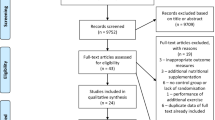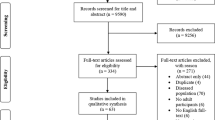Abstract
Backgrounds
Different and new approaches have been proposed to prevent the risk of falling of elderly people, particularly women.
Aims
This study investigates the possibility that a new protocol based on the focal mechanical muscle vibration may reduce the risk of falling of elderly women.
Methods
A pragmatic randomized controlled triple-blind trial with a 6-month follow-up after intervention randomized 350 women (mean age 73.4 years + 3.11), members of local senior citizen centers in Rome, into two groups: vibrated group (VG) and control group (CG). For VG participants a mechanical vibration (lasting 10 min) was focally applied on voluntary contracted quadriceps muscles, three times a day during three consecutive days. CG subjects received a placebo vibratory stimulation. Subjects were tested immediately before (T0) and 30 (T1) and 180 (T2) days after the intervention with the Performance-Oriented Mobility Assessment (POMA) test. All subjects were asked not to change their lifestyle during the study. CG underwent sham vibratory treatment.
Results
While CG did not show any statistically significant change of POMA at T1 and T2, VG revealed significant differences. At T2, ≈47 % of the subjects who completed the study obtained the full score on the POMA test and ≈59 % reached the full POMA score.
Conclusions
The new protocol seems to be promising in reducing the risk of falling of elderly subjects.


Similar content being viewed by others
Abbreviations
- CG:
-
Control group
- POMA:
-
Performance-Oriented Mobility Assessment
- rMV:
-
Repetitive muscle vibration
- VG:
-
Vibrated group
References
Campbell AJ, Borrie MJ, Spears GF et al (1990) Circumstances and consequences of falls experienced by a community population 70 years and over during a prospective study. Age Ageing 19:136–141
Stevens JA, Ballesteros MF, Mack KA et al (2012) Gender differences in seeking care for falls in the aged Medicare population. Am J Prev Med 43:59–62
Stevens JA, Corso PS, Finkelstein EA et al (2006) The costs of fatal and non-fatal falls among older adults. Inj Prev 12:290–295
Scuffham P, Chaplin S, Legood R (2003) Incidence and costs of unintentional falls in older people in the United Kingdom. J Epidemiol Community Health 57:740–744
Iosa M, Fusco A, Morone G et al (2014) Development and decline of upright gait stability. Front Aging Neurosci 6:14
Salminen M, Vahlberg T, Sihvonen S et al (2008) Effect of risk-based multifactorial fall prevention program on maximal isometric muscle strength in community-dwelling aged: a randomized controlled trial. Aging Clin Exp Res 20:487–493
Filippi GM, Brunetti O, Botti FM et al (2009) Improvement of stance control and muscle performance induced by focal muscle vibration in young-elderly women: a randomized controlled trial. Arch Phys Med Rehabil 90:2019–2025
Marconi B, Filippi GM, Koch G et al (2008) Long-term effects on motor cortical excitability induced by repeated muscle vibration during contraction in healthy subjects. J Neurol Sci 275:51–59
Marconi B, Filippi GM, Koch G et al (2011) Long-term effects on cortical excitability and motor recovery induced by repeated muscle vibration in chronic stroke patients. Neurorehabil Neural Repair 25:48–60
Brunetti O, Filippi GM, Lorenzini M et al (2006) Improvement of posture stability by vibratory stimulation following anterior cruciate ligament (ACL) reconstruction. Knee Surg Sports Traumatol Arthrosc 14:1180–1187
Brunetti O, Botti FM, Roscini M et al (2012) Focal vibration of quadriceps muscle enhances leg power and decreases knee joint laxity in female volleyball players. J Sports Med Phys Fit 52:596–605
Fattorini L, Ferraresi A, Rodio A et al (2006) Motor performance changes induced by muscle vibration. Eur J Appl Physiol 98:79–87
Celletti C, Castori M, Galli M et al (2011) Evaluation of balance and improvement of proprioception by repetitive muscle vibration in a 15-year-old girl with joint hypermobility syndrome. Arthritis Care Res (Hoboken) 63:775–779
Caliandro P, Celletti C, Padua L et al (2012) Focal muscle vibration in the treatment of upper limb spasticity: a pilot randomized controlled trial in patients with chronic stroke. Arch Phys Med Rehabil 93:1656–1661
Hortobágyi T, Solnik S, Gruber A et al (2009) Interaction between age and gait velocity in the amplitude and timing of antagonist muscle coactivation. Gait Posture 29:558–564
Nelson-Wong E, Appell R, McKay M et al (2012) Increased fall risk is associated with elevated co-contraction about the ankle during static balance challenges in older adults. Eur J Appl Physiol 112:1379–1389
Ochi A, Yokoyama S, Abe T et al (2014) Differences in muscle activation patterns during step recovery in elderly women with and without a history of falls. Aging Clin Exp Res 26:213–220
Tinetti ME (1986) Performance oriented assessment of mobility problems in elderly patients. J Am Geriatr Soc 34:119–126
Faber MJ, Bosscher RJ, van Wieringen PC (2006) Clinimetric properties of the performance-oriented mobility assessment. Phys Ther 86:944–954
Köpke S, Meyer G (2006) The Tinetti test: Babylon in geriatric assessment. Z Gerontol Geriatr 39:288–291
Cipriany-Dacko L, Innerst D, Johannsen J et al (1997) Interrater reliability of the Tinetti Balance Scores in novice and experienced physical therapy clinicians. Arch Phys Med Rehabil 78:1160–1164
Lin MR, Hwang HF, Hu MH et al (2004) Psychometric comparisons of the timed up and go, one-leg stand, functional reach, and Tinetti balance measures in community-dwelling older people. J Am Geriatr Soc 52:1343–1348
Moher D, Hopewell S, Schulz KF, For the CONSORT Group et al (2010) CONSORT 2010 explanation and elaboration: updated guidelines for reporting parallel group randomised trial. BMJ 340:c869
Conflict of interest
We certify that Filippi G.M. is a consultant with the dealer of the device used in this study. None of the other authors has a conflict of interest which could alter the primary interest of this study.
Human and Animal Rights
The experimental protocol was designed in accordance with the Declaration of Helsinki (1964) and was approved by the Catholic University ethics committee (P/1218/CE/2012).
Informed consent
All study participants provided informed consent.
Author information
Authors and Affiliations
Corresponding author
Rights and permissions
About this article
Cite this article
Celletti, C., Fattorini, L., Camerota, F. et al. Focal muscle vibration as a possible intervention to prevent falls in elderly women: a pragmatic randomized controlled trial. Aging Clin Exp Res 27, 857–863 (2015). https://doi.org/10.1007/s40520-015-0356-x
Received:
Accepted:
Published:
Issue Date:
DOI: https://doi.org/10.1007/s40520-015-0356-x




